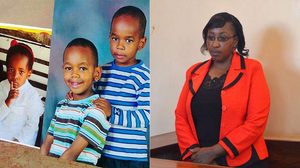
Bipolar Disorder
What is Bipolar Disorder?
Table of Contents
Bipolar Disorder (formerly known as manic depression) is a chronic mental health condition that causes extreme shifts in a person's mood, energy, activity levels, and concentration. These shifts are more severe than the normal ups and downs that everyone experiences and can impact the ability to carry out day-to-day tasks.
Key Types of Bipolar Disorder
There are several types, but the three most common are:
Bipolar I Disorder:
Defined by manic episodes that last at least 7 days, or by manic symptoms so severe that immediate hospital care is needed.
Depressive episodes typically occur as well, often lasting for at least 2 weeks.
A person can also have episodes with mixed features (both manic and depressive symptoms simultaneously).
Bipolar II Disorder:
Defined by a pattern of depressive episodes and hypomanic episodes (a less severe form of mania that does not lead to psychosis or require hospitalization).
The depressive episodes are often the dominant and more disabling feature.
Cyclothymic Disorder (Cyclothymia):
Defined by periods of hypomanic symptoms and periods of depressive symptoms lasting for at least 2 years (1 year in children and adolescents).
The symptoms are less severe than full hypomania or depression but are chronic and can be disruptive.
Understanding the Mood Episodes
Manic Episode: A distinct period of abnormally and persistently elevated, expansive, or irritable mood and increased activity or energy.
Symptoms may include: Inflated self-esteem or grandiosity, decreased need for sleep, being more talkative than usual, racing thoughts, distractibility, increase in goal-directed activity (social, work, school), and excessive involvement in risky activities (e.g., unrestrained spending, reckless driving, foolish business investments).
Hypomanic Episode: A milder form of mania. The symptoms are identical but less intense, do not cause significant impairment in social or occupational functioning, and do not require hospitalization. The change in mood and functioning is noticeable to others.
Major Depressive Episode: A period of persistent and intense low mood.
Symptoms may include: Depressed mood most of the day, markedly diminished interest or pleasure in activities, significant weight loss or gain, insomnia or sleeping too much, restlessness or slowed behavior, fatigue or loss of energy, feelings of worthlessness or excessive guilt, difficulty concentrating, and recurrent thoughts of death or suicide.
Causes and Risk Factors
The exact cause is unknown, but it is believed to be a combination of several factors:
Genetics: Bipolar Disorder often runs in families. Having a close relative with the condition is a significant risk factor.
Biological Differences: Research shows that people with bipolar disorder may have physical changes in their brains, and imbalances in neurotransmitters (brain chemicals) like norepinephrine, serotonin, and dopamine.
Environmental Triggers: Highly stressful life events, trauma, substance abuse, or physical illness can trigger the initial onset of episodes in someone predisposed to the disorder.
Diagnosis and Treatment
There is no single test for bipolar disorder. Diagnosis is made by a qualified mental health professional through a comprehensive clinical assessment, which may include interviews, questionnaires, and medical history review.
Treatment is effective and typically involves a combination of:
Medication:
Mood Stabilizers (e.g., Lithium, Valproate)
Atypical Antipsychotics (e.g., Quetiapine, Olanzapine, Aripiprazole)
Antidepressants (used cautiously and always with a mood stabilizer to prevent triggering mania)
Psychotherapy (Talk Therapy):
Cognitive Behavioral Therapy (CBT): Helps identify and change negative thought and behavior patterns.
Family-Focused Therapy: Involves family members to improve communication and support.
Interpersonal and Social Rhythm Therapy (IPSRT): Helps stabilize daily routines and manage relationships.
Lifestyle Management:
Routine: Maintaining a regular schedule for sleep, meals, and exercise is crucial.
Healthy Habits: A balanced diet, regular physical activity, and avoiding alcohol and recreational drugs.
Psychoeducation: Learning about the condition helps individuals recognize early warning signs of an episode and manage their illness effectively.
Myths vs. Facts
Myth: Mood swings in bipolar disorder are quick and change by the hour.
Fact: Mood episodes are distinct periods that last for days, weeks, or even months. Rapid mood swings within a day are not typical of bipolar disorder.
Myth: Bipolar Disorder is just "moodiness" and a lack of willpower.
Fact: It is a real, biological brain disorder with a strong genetic component, not a character flaw.
Myth: People with Bipolar Disorder can't lead successful, fulfilling lives.
Fact: With proper treatment and support, many people with bipolar disorder manage their symptoms effectively and lead productive, happy lives.
How to Help Someone with Bipolar Disorder
Educate yourself about the condition.
Be patient and empathetic. Listen without judgment.
Encourage them to seek and stay with treatment.
Recognize the warning signs of an oncoming episode.
Take talk of suicide seriously and seek immediate help.
Take care of your own mental health.









